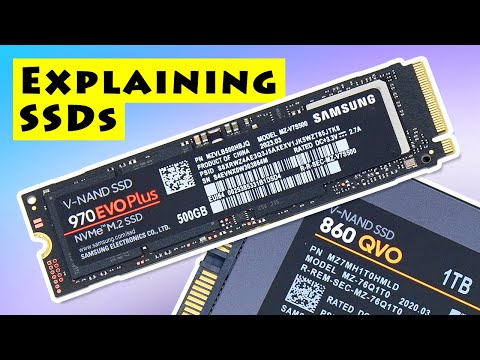The video from explainingcomputers.com dives deep into the world of solid-state drives (SSDs), emphasizing the importance of understanding different flash storage technologies and their impact on SSD longevity and performance.
The video explains the evolution from single-level cell (SLC) flash storage, which stores one bit per cell, to more complex multi-level cell (MLC), triple-level cell (TLC), and quad-level cell (QLC) technologies that store more bits per cell but have fewer program-erase cycles. It also touches on the upcoming pent-level cell (PLC) technology. The presenter mentions the role of different SSD technologies such as DRAM and DRAM-less SSDs, SLC cache, and the significance of wear leveling in preserving the life of SSDs.
The introduction of 3D NAND technology, which stacks memory cells to increase storage capacity without modifying the bits per cell, is also discussed. Attention is given to the practical implications of SSD capacity and life expectancy, noting that larger SSDs typically offer more terabytes written (TBW) and thus a longer lifespan, using Samsung SSD models as examples. The presenter notes the performance characteristics of SSDs, including the impact of interfaces like SATA and NVMe, as well their input/output operations per second (IOPS).
Furthermore, the video explains the benefits and trade-offs of modern SSDs with technologies like Dynamic SLC caching, which speeds up write operations, and host memory buffer (HMB), which compensates for the absence of DRAM in some SSDs, ensuring performance isn’t severely hindered. In conclusion, while modern SSDs offer better performance and reliability, the specific needs such as high-speed writes and long-term durability still require careful consideration of the specifications and technologies used in an SSD.









